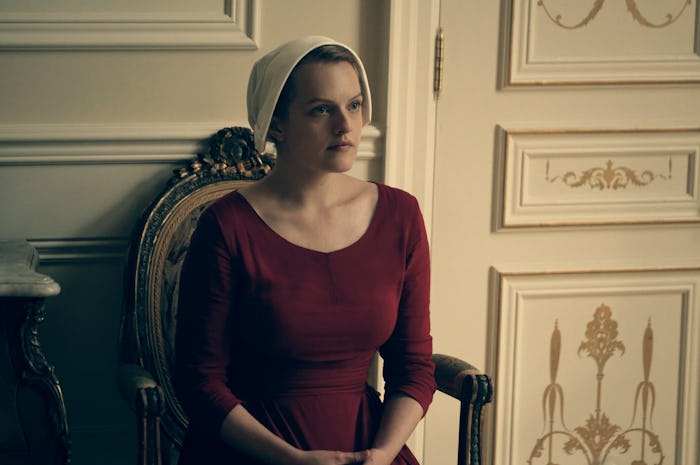Entertainment

Comparing Hulu's 'The Handmaid's Tale' To The Book
Hulu's The Handmaid's Tale is an adaptation of the book of the same title by Margaret Atwood. It isn't the first time the book has been brought to the screen (that honor goes to the poorly received film version from 1990 starring Natasha Richardson), but it may be the version that finally does the book justice. It's a faithful adaptation, but it remains true to the spirit of the novel without necessarily including every single detail from its pages. Hulu's The Handmaid's Tale vs. the book shows that even if an adaptation doesn't bring every last word to the screen, it can still express the core of the thing it's adapting.
Both the Hulu series and the novel follow Offred, the handmaid assigned to the childless Commander and his wife Serena Joy in a new regime that has stripped women of all their rights. It takes place in the near future, where the United States has been renamed the Republic of Gilead after an ultra-conservative religious sect violently took power following environmental disasters and declining fertility. The novel was written originally in 1985 and while it still feels incredibly timely, the Hulu series also took steps to make the show feel even more relevant.
Hulu Modernizes The Story
By showing how the world fell apart, including a pre-handmaid Offred engaging in a peaceful protest that goes awry, the Hulu series grounds the story in the real world even more than the novel does. It reflects the current political landscape in a way that has been described as chilling.
It's About Privilege
Both versions of the story explore privilege and power by showing how that can manifest in extreme and damaging ways when the wrong people are in charge. As the Commander says in both book and show, "Better never means better for everyone. It always means worse, for some."
Serena Joy Is Younger
In the novel, Serena Joy is older than Offred, but in the Hulu series she's much younger so that she could be a contemporary of Offred's. According the series showrunner Bruce Miller, that was done on purpose to make a point about both women's differing situations. "It bumped me that Serena Joy was beyond childbearing years [in the novel], because it felt like they weren't in direct competition, that Offred wasn't taking a role that Serena Joy wanted for herself," Miller told Esquire. "I thought it was a more interesting dynamic for the long term, as opposed to in the novel – a dynamic that could play out over time."
The Story Might Continue
Atwood's novel has an uncertain ending that has caused mixed reactions over the years. In it (spoiler alert) Offred leaves the Commander's house and, many years later after the fall of Gilead, students in a university setting dissect her story with clinical distance. The series, however, might end up continuing on for more than one season, pushing past the boundaries of Atwood's novel to create something new. The world of the story is rich enough that there is so much more to explore.
It Expands On The Novel
The novel is strictly from Offred's point of view, so there are things she doesn't know and journeys she can't follow. The Hulu series, however, can do that; it can take a look at what happens to characters besides Offred once they depart from her storyline, expanding on the novel to give audiences a fuller picture of what life in Gilead is truly like.
Both Stories Are About Survival
Ultimately, both the book and the show are about surviving the unthinkable no matter what the cost. Offred faces horrifying challenges, but the fact that she is able to find it within herself to keep fighting is inspirational no matter how much her life may differ from viewers'.
There have been some changes made from novel to series, but they all bolster the book's message — a message that couldn't arrive at a more appropriate time.